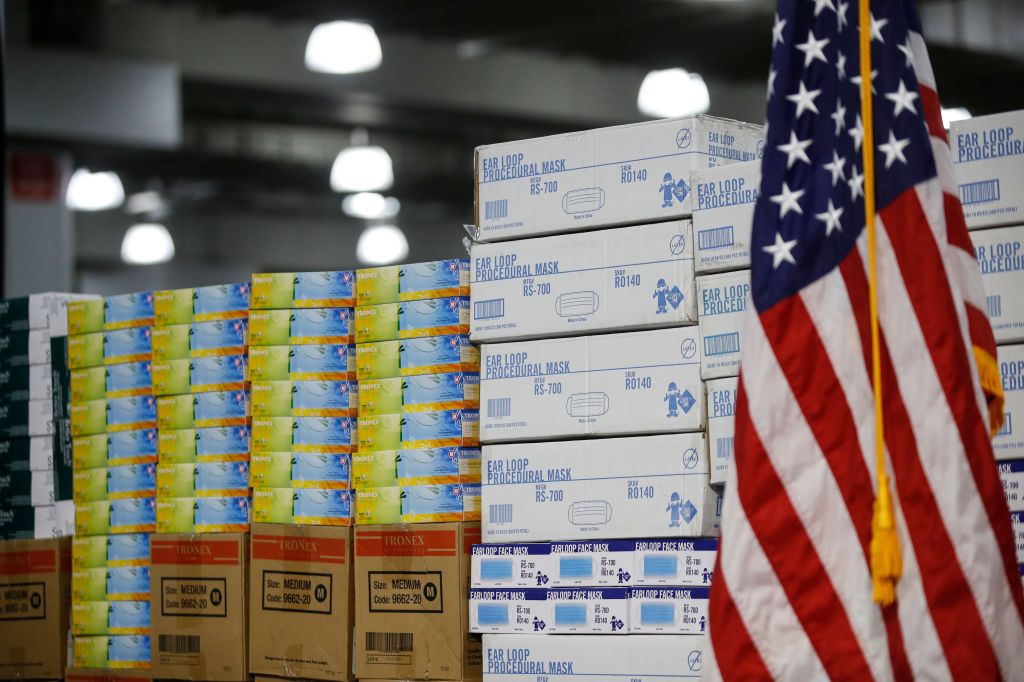[ad_1]
As New York State stares down a rapidly growing number of coronavirus cases, its hospitals face critical shortages in medical equipment such as ventilators for patients and face masks and nitrile gloves for health care staff. Authorities anticipate a crushing wave of patients to come, and doctors and nurses are being required to put themselves at risk by interacting with patients sans protection.
Help with some of those supplies has come from a perhaps unexpected source: art museums and schools. Art spaces around New York City are doing their part to meet the needs of medical professionals, packing up crates of gloves typically used to protect artworks from oil and dust on the hands of those touching artworks and sending off coveted N95 respirators that protect front-line health care workers from the virus. Typically, these everyday objects are used while installing and conserving artworks. Now, they have become lifesavers for doctors, nurses, and others across the state.
At numerous museums, art handlers and preparators are boxing up their supplies and shipping them off to area hospitals. People first noticed such efforts when the Whitney Museum’s senior deputy director and chief curator, Scott Rothkopf, Instagrammed a photo three days ago showing outbound boxes holding protective equipment.
Bigger institutions have also gotten into the game. The Museum of Modern Art has donated almost 3,000 nitrile gloves to Mount Sinai, New York Presbyterian/Columbia University Medical Center, and other area hospitals, and has sent three hundred N95 masks to NYU Langone, according to a press representative. MoMA PS1, its sister institution in Queens, has donated 50 boxes of gloves to New York Presbyterian and Montefiore Medical Center.
Art schools, too, are pitching in what they can. In response to a call from New York Governor Andrew Cuomo, employees at the Cooper Union—a famed New York school known for its art, architecture, and engineering programs—went on the hunt for equipment in places like the school’s chemistry stockroom and chemical engineering lab. They rustled up a box of N95 respirators and dozens of boxes of gloves as well as disinfecting wipes and 16 pairs of protective goggles. All went to Columbia Presbyterian Hospital, on New York’s Upper East Side. The school of art, meanwhile, scouted materials in every department and also rounded up gloves and masks, all of which were delivered to the massive Javits Convention Center, in Midtown West, which is being converted to a temporary hospital.
“We must come together to help keep our communities safe and healthy,” said Cooper Union president Laura Sparks in a statement to ARTnews, “and donating gloves and masks for those on the frontline is one step.”
But Covid-19 is a national crisis, and 3,000 miles away, California Governor Gavin Newsom predicted on Monday that his state would be short of about 17,000 hospital beds as well as a billion protective gloves and hundreds of millions of masks. Heeding the call, the Getty Center in Los Angeles donated thousands of gloves and hundreds of N95 respirators to the University of California Los Angeles’s medical center, according to the museum’s press office.
Conservation and installation staff at the San Francisco Museum of Modern Art rounded up “many boxes” of N95 respirators and gloves as well as Tyvek suits and shoe covers, according to a representative. The suits typically are used to keep museum workers’ clothes clean. The shoe covers, in everyday museum life, protect floors from dusty footprints, for example; in hospitals, they serve a much more urgent purpose. (Those who recently watched Steven Soderbergh’s 2011 thriller Contagion may recall Laurence Fishburne’s character—Dr. Ellis Cheever, the head of the Centers for Disease Control and Prevention—restricting research on the deadly MEV-1 virus to high-security government labs, saying that the last thing he wants is the disease walking out of a lab on the bottom of someone’s shoe.)
San Francisco’s Asian Art Museum, meanwhile, convened the museum’s emergency response team, which includes staff from every department, and found a few hundred N95 masks that it donated to the city, a press officer said.
But the museum was especially situated to help even more. Some of the museum’s employees work for the city and are currently on paid furlough. Those unable to perform their duties from home, the press officer explained, can serve as disaster service workers, managing sites where they triage non-medical issues and coordinating services at city-run quarantine housing.
How did the idea originate? The emergency response team simply “followed the zeitgeist,” said a press officer, adding, “How can we be of service?”
[ad_2]
Source link


